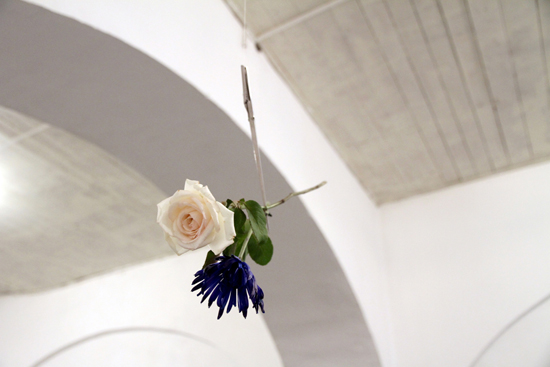 "Paradox Landscape". Curateur Treći Beograd, Urban Incubator-Goethe Institut program. Gallery Osmica, Belgrade, Serbie
"Paradox Landscape". Curateur Treći Beograd, Urban Incubator-Goethe Institut program. Gallery Osmica, Belgrade, Serbie "Paradox Landscape". Curateur Treći Beograd, Urban Incubator-Goethe Institut program. Gallery Osmica, Belgrade, Serbie
"Paradox Landscape". Curateur Treći Beograd, Urban Incubator-Goethe Institut program. Gallery Osmica, Belgrade, Serbie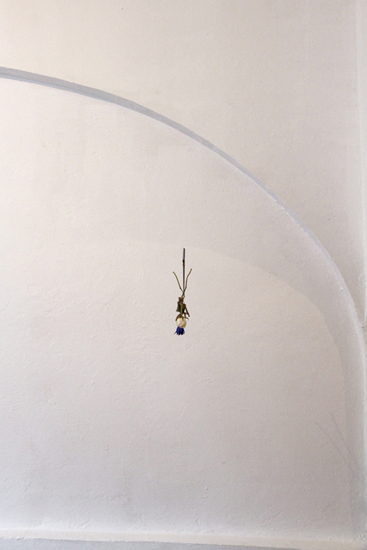 "Paradox Landscape". Curateur Treći Beograd, Urban Incubator-Goethe Institut program. Gallery Osmica, Belgrade, Serbie
"Paradox Landscape". Curateur Treći Beograd, Urban Incubator-Goethe Institut program. Gallery Osmica, Belgrade, Serbie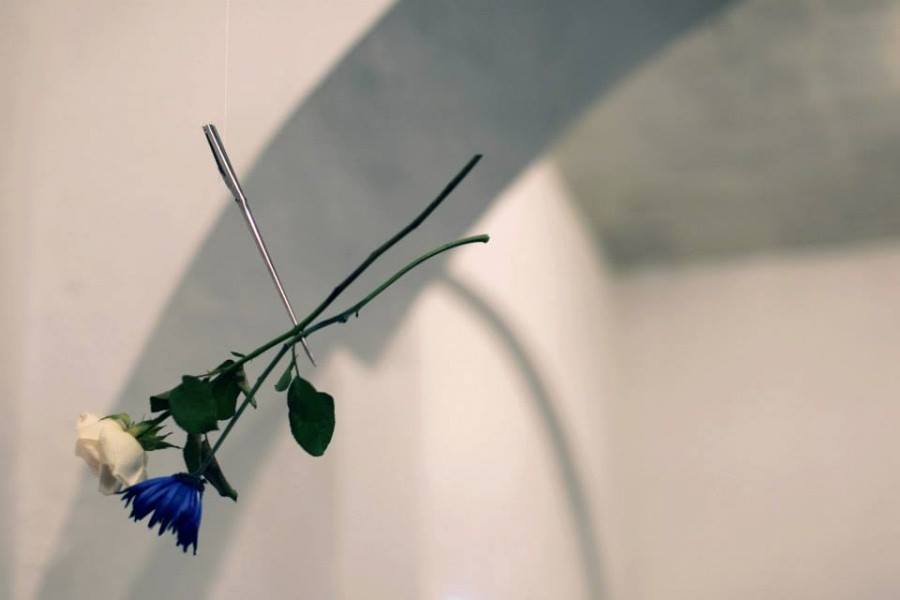
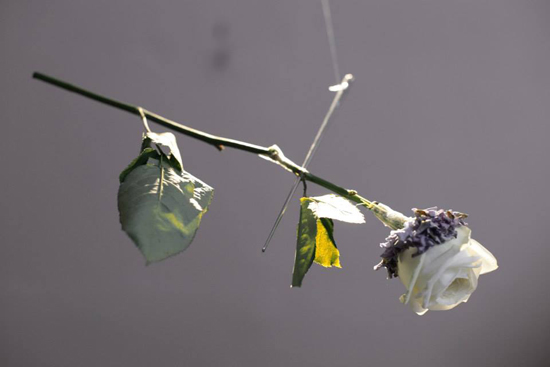 photo Selman Trtovac. "Memory of the Violence and Dreams about the Future #2". Commissariat Sanja Kojic Mladenov. Kibla Portal, Maribor, Slovenie
photo Selman Trtovac. "Memory of the Violence and Dreams about the Future #2". Commissariat Sanja Kojic Mladenov. Kibla Portal, Maribor, Slovenie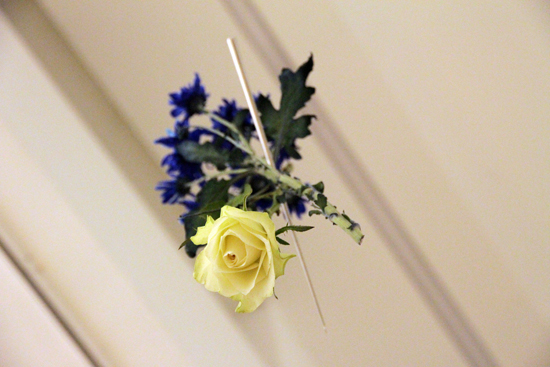 "Memory of the Violence and Dreams about the Future". Museum of Contemporary Art of Vojvodina. Novi Sad, Serbie
"Memory of the Violence and Dreams about the Future". Museum of Contemporary Art of Vojvodina. Novi Sad, Serbie
Fleur bleue et rose blanche
2012
Composition florale suspendue : Aiguille à larder, fleur bleue, rose blanche
Dimensions variables.
L’objet rappelle un Ikebana, art japonais qui se distingue, par sa symbolique, son asymétrie et sa recherche de l’utilisation de l’espace.
Cet Ikebana se compose d’une rose blanche et d’une fleur bleue maintenues par un lardoir, tige creuse métallique ouverte dans sa longueur, permettant d’insérer du lard dans l’épaisseur des pièces de viande.
« Fleur bleue et Rose blanche » revisite l’histoire allemande :
« Die Weiße Rose » est le nom d’un groupe de résistants Munichois, fondé en juin 1942, composé de quelques étudiants et de leurs proches et soutenus par leur professeur de philosophie Kurt Huber.
Révoltés par le totalitarisme hitlérien et les souffrances causées par la guerre, leur convictions sont fondées sur une profonde culture humaniste.
Les étudiants se référèrent dans leurs tracts qui sont un appel vibrant à la conscience collective, notamment à Goethe et Novalis.
Après leur exécution en 1943 par la Gestapo, des millions d’exemplaires de leur dernier tract seront lâchés sur le territoire allemand par l’aviation anglaise, perpétuant ainsi l’œuvre de résistance éthique.
« Die blaue Blume » quant à elle s’inspire du roman inachevé de Novalis « Heinrich von Ofterdingen ».
Le fragment commence avec le rêve de la fleur bleue qui devient le visage d’une jeune fille. A son réveil Heinrich se met à la recherche de cette fleur.
Chez Novalis, cette fleur symbolise l’amour absolu qu’Henri porte à Mathilde mais aussi l’union du rêve et du réel, signe des affinités des deux mondes.
L’expression devenue célèbre de « fleur bleue » préfigure un des grands objectifs du romantisme allemand, c’est à dire la recherche du paradis perdu, la communication avec la nature et la proximité de la mort.
Blue flower and white rose
2012
suspended Ikebana : larding needle, a blue flower, a white rose.
Variables dimensions
The object is reminiscent of an Ikebana, a Japanese art distinguished by its symbolism, its asymmetry and its search for the use of space.
This Ikebana is composed of a white rose and a blue flower held by a hollow metal rod opened in its length, allowing to insert fat in the thickness of the pieces of meat.
As a Parable, this Ikebana could be seen to have been enacted throughout the German history :
'Die Weisse Rose' (The White Rose) was founded in Munich in June 1942. This was the name of a resistance group composed of some students and their families and supported by their philosophy professor Kurt Huber.
Revolted by Hitler's totalitarianism and the sufferings caused by war, their beliefs were based on a deeply humanistic culture.
The students referred in their leaflets which are a vibrant call to the collective conscience, especially to Goethe and Novalis.
After their execution in 1943 by the Gestapo, millions of copies will be over German territory by the British air force, thus perpetuating the work of ethical resistance.
'Die Blaue Blume' (The Blue Flower) was inspired by 'Heinrich von Ofterdingen', the unfinished novel of Novalis.
The fragment begins with the dream of the blue flower that becomes the face of a young girl. Upon awakening Heinrich goes in search of this flower.
For Novalis, this flower symbolizes not only the absolute love Henri will bear for his young Mathilde but also the affinities in the signs of, and union of, both the worlds of Dream and Reality.
The now famous expression "blue flower" foreshadows a major objective of German romanticism, that is the search for the lost paradise, the communication with nature, and the sobriety from facing death.